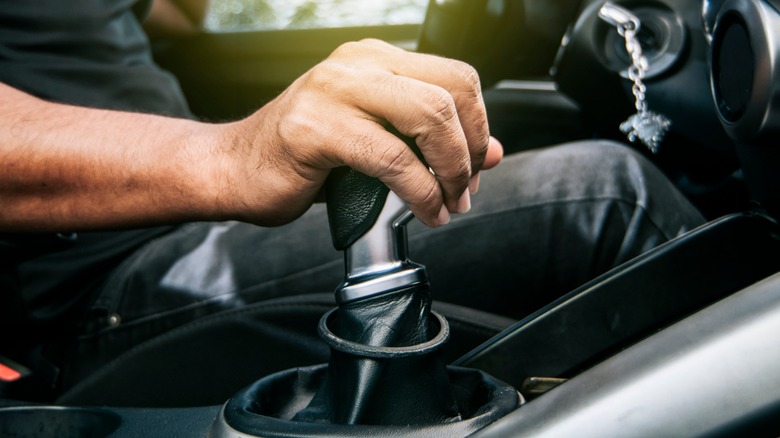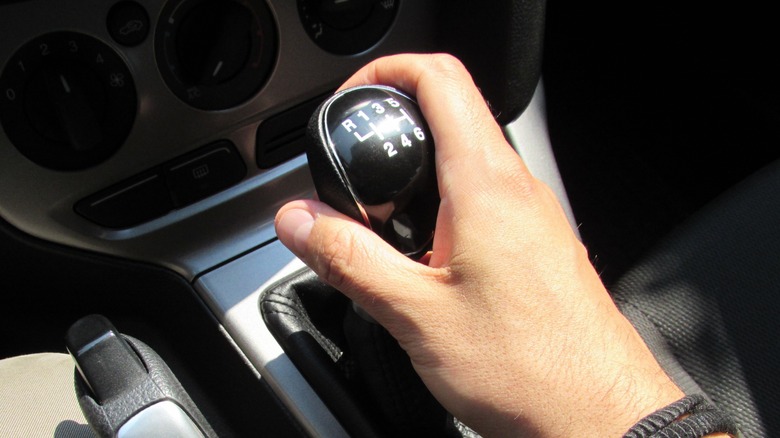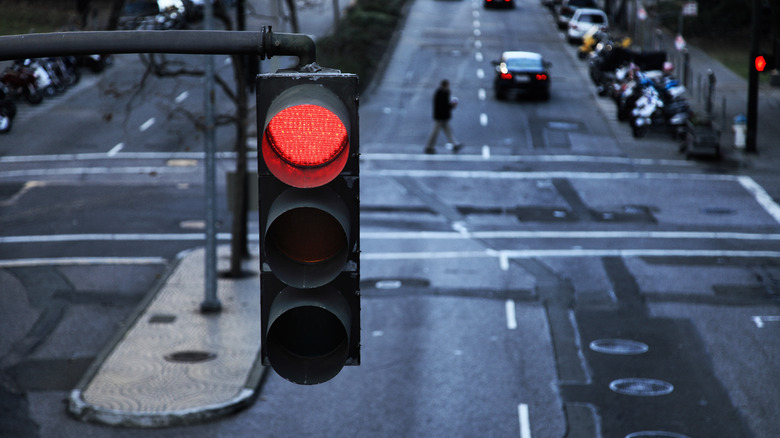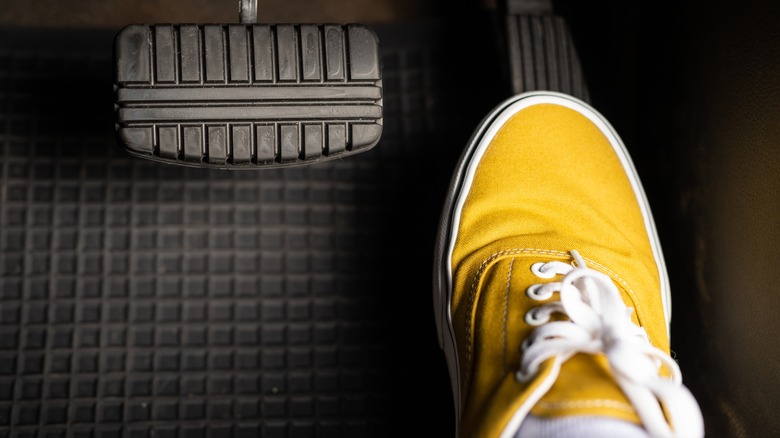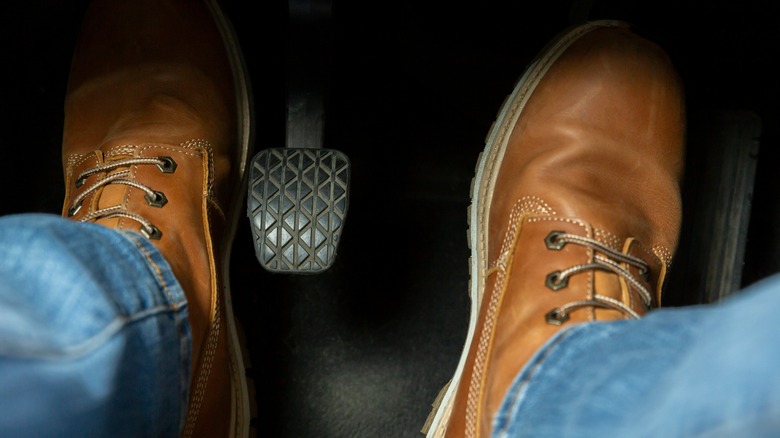How To Downshift While Braking With A Manual Transmission
Whether you're new to manual transmissions or have been driving with them for years, it's important to remember that there are "right" and "wrong" ways to use them. Particularly because, unlike automatics, most of the shifting process is in your hands.
Knowing when to change gears (and how) while accelerating is essential, and the same goes for downshifting (i.e. changing to a lower gear as the car slows down). Downshifting can be tricky as you often need to expand your focus to include braking — and unlike shifting upwards, downshifting past some gears is more likely depending on how quickly you decelerate.
Believe it or not, there's more than one approach to downshifting with a manual transmission. And figuring out which works best for you comes down to practice and personal comfort. It is probably best to avoid the version of downshifting you were most likely taught in driver's education courses if you want to avoid putting more stress on the clutch than you need.
Downshifting basics
Both manual and automatic transmissions need to shift up and down through various gears as you drive, and the main difference is that an automatic will take care of it all for you. Downshifting with a manual transmission requires pushing in the clutch (the leftmost pedal), moving the stick shift into the necessary gear, then releasing the clutch. It's not always necessary to brake before pushing in the clutch, depending on how fast you're decelerating, but it's usually a good idea to do that either as you hit the brake or right after.
Knowing the best time to downshift can be a little more tricky than the physical action, though — especially if you're new to manuals. In general, you'll want to be in First for up to 10 mph, Second for up to 25 mph, Third for up to 45 mph, Fourth for up to 65 mph, and Fifth for anything above that. Though there is some wiggle room between each gear, and individual engines may have slightly different thresholds.
The same goes for engine RPMs (rotations per minute). If your car's dashboard has a tachometer, you can gauge when to shift by looking at the engine's current RPMs. You'll typically want to aim for around 3000 RPMs when shifting up or 1000 when shifting down, but as with using speed to gauge it's not super precise.
If you know you're stopping completely
When coming up to a red light, stop sign, or traffic jam you're going to start braking — preferably sooner and easing into it, rather than slamming on the brakes. When you're behind the wheel (or stick, in this case) of a manual transmission, that also means shifting into lower gears.
Something to keep in mind, however, is that you don't need to incrementally shift down through the various gears as you stop until you get to First or Neutral. Doing so can actually cause unneeded wear and tear to your car's clutch.
When you start braking, push in the clutch and shift into Neutral (the space between gears, where the stick shift can "wiggle" freely a bit). Keep it in Neutral as you continue to press on the brake until you've come to a stop, and stay in Neutral until it's time to start moving again. Also remember to take your foot off the clutch once the car is stopped in Neutral to save yourself from foot cramps and, more importantly, damage to the gearbox. Once it's time to start moving again, push in the clutch and shift to First, release the brake, ease up on the clutch, and start accelerating.
Using the accelerator?
While the basic "push in the clutch, downshift, let go of the clutch" method is probably the most commonly used and taught, it's not necessarily the best. In most cases, downshifting this way can cause a bit of a lurch as the engine and throttle try to match revolutions. One of the simplest ways to avoid this is to do something that sounds counter-intuitive: Push in the throttle while you're slowing down.
This approach is a bit trickier than basic downshifting as the amount of throttle you need varies based on what gear you're in. For example, the drop from Fifth to Fourth requires less throttle than going from Second to First. But the reason this works is because, in giving the accelerator just a little bit of juice as you shift, you're making it easier for the engine and throttle revolutions to match up.
It's very similar to default downshifting. As you slow down, push in the clutch and shift to a lower gear. However, this time you'll also want to push the accelerator (don't hold it, you're just giving it a tap) just before releasing the clutch. Again, the amount of throttle needed depends on the gear (and your car's engine), but it can become second nature with practice.
Double clutch downshifting
The double clutch method of downshifting is similar to using the throttle, except it requires more timing and foot dexterity because you'll be pushing in the clutch and shifting twice. It's not any better or worse for the engine – think of it more as a stylistic choice — but it does alleviate stress on the clutch compared to the default "clutch in, shift, clutch out" technique.
You'll want to push in the clutch when slowing down, but this time you're shifting into Neutral and releasing the clutch again. After this, you tap the accelerator to rev up the engine (while still in Neutral), then push the clutch back in and shift down the requisite gear before letting up on the clutch.
Again, this accomplishes the same thing as shifting while tapping the throttle but uses a couple of extra steps. As with all manual shifting techniques, it's possible to get so used to it that you don't even think about it, but there's no real reason to downshift this way unless you like the feel of it — or you're just curious to know what double clutch shifting is in the first place.
